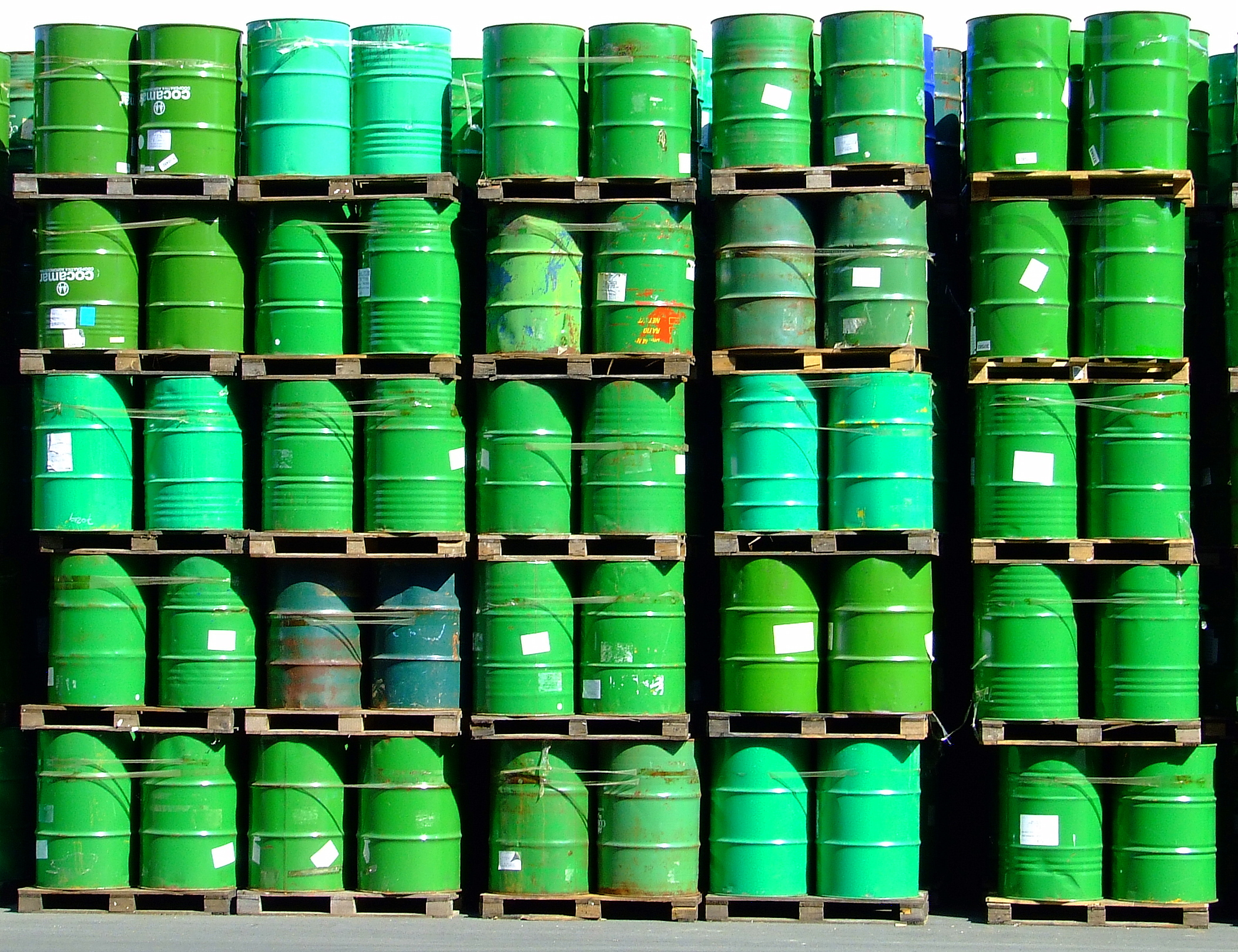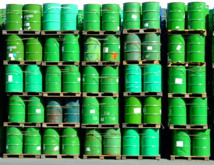In November 2014, the market was waiting for the response on the traditional OPEC price drop, but the cartel decided to act quite differently.
At the same time, when everyone thought that the market has all the prerequisites for reducing, the prices have fallen from more than $ 100 per barrel of Brent to $ 70.
OPEC’s answer was rather unpredictable - they have set a quota of 30 million barrels per day, controlling a third of the world's supply.
It is no secret that OPEC produces considerably more of their declared level of quotas. Now the level of production is about 31 million barrels per day.
Saudi Arabia, as the de facto leader of OPEC, intends to keep tight control over their market share, and low oil prices, combined with high levels of production, allow to crush competitors, primarily American shale producers.
However, Saudi Arabia is further increasing competition by offering certain customers, primarily in Asia, cheap energy.
Not all the countries of OPEC are ready to go after Saudi Arabia, while a slight decline in production would simply give a signal to global producers to increase production and thus any price surge would be temporary.
However, Iraq, United Arab Emirates, as well as countries outside of OPEC, such as Russia, are also trying to keep the oil at record highs.
It keeps prices low, as the market is still faced with excess, which, according to various estimates, is about 800 thous. bpd.
JP Morgan estimated that the November’s decision of OPEC cartel would cost $ 200 billion a year.
- Our simple calculation shows that the strategy of increasing oil production in Saudi Arabia will cost about $ 90 billion a year, and probably $ 200 billion a year to OPEC countries as a whole," – says their statement.
In the current situation, Saudi Arabia gains about $ 210 billion a year from the sale of oil. Although OPEC has maintained the status quo and reduced production in June, a slight change in the rhetoric of the Saudis recently became apparent.
Lately, they claimed that the whole cartel and non-OPEC players like Russia should withstand the worst of production cuts, as it was in 1986 and 1998.
$ 90 billion a year is a lot even for Saudi Arabia. Recall that the reserves of the central bank of the Kingdom in the first four months fell by $ 49 billion, from $ 732 billion in 2014 to $ 683 billion in April.
It should be borne in mind that in many ways, the reduction of reserves was also contributed by the decision of the new King of Saudi Arabia, Salman bin Abdul-Aziz Al Saud to pay $ 30 billion in bonuses, allowances and cancellation of debts after his ascension to the throne. Thus, the real losses from lower oil prices are about $ 20 billion, which generally confirms JP Morgan’s forecast.
Nevertheless, on OPEC’s scale, lost such a sum does not seem so critical, although some countries, such as Venezuela and Nigeria, may feel the loss of even small amounts.
Not all the OPEC countries are faced with a reduction of reserves. Kuwait, being away from the main battle, continues to accumulate foreign exchange reserves, even at record low oil prices.
At the end of 2014-2015 fiscal year, Kuwait's foreign exchange reserves reached a record value of $ 592 billion (179.2 billion dinars). They have increased by $ 53 billion since March last year.
At the same time, Saudi Arabia and Kuwait have found a very elegant solution to the situation, due to the low prices and the fall in oil revenues.
Most recently, we learned that Saudi Arabia has decided to increase the supply of diesel fuel. Until 2010, Saudi Arabia exported virtually all diesel fuel, but in 2014, the export volume exceeded 300 thousand bpd.
Saudi Arabia has actively started to work on the market of diesel fuel and the current increase in supplies was made possible after the commissioning of the Yanbu factory in April, with a capacity of 400 th. bpd.
This is a very large volume, and several tankers are required for transportation of such amount of distillate Apparently, now there is at least seven of them, including Suezmax Atina tanker, accommodating 120 th. of tons.
Not only Saudi Arabia chose this way. Kuwait implements a similar strategy, and apparently does it very well. Last year, Kuwait has spent $ 12 billion to modernize two of the three refineries.
Now the authorities are willing to allocate money for the construction of a new refinery "Al-Zour", with annual capacity of 600 th., up to 800 th. barrels per day. The cost of the construction appears to be about $ 16 billion. At least the cost of the respective tender was increased from $ 2.9 billion to $ 15.85 billion.
After the refinery is launched in 2018, Kuwait's refining capacity will rise to 1.4 million barrels per day compared to 930 th. barrels nowadays.
Kuwait plans to spend about $ 60 billion on oil projects in the next five years to modernize the oil industry and to increase production capacity to 4 million barrels per day.
The first deliveries are dedicated to Europe, traditionally served by India and South Korea. It is also possible to obtain certain advantages when refining.
First, jobs are created, which will favorably affects the demand and the overall economy. Second, the fuel is more profitable to sell, which is very important on the ground of falling oil prices and the corresponding reduction of income.
At the same time, when everyone thought that the market has all the prerequisites for reducing, the prices have fallen from more than $ 100 per barrel of Brent to $ 70.
OPEC’s answer was rather unpredictable - they have set a quota of 30 million barrels per day, controlling a third of the world's supply.
It is no secret that OPEC produces considerably more of their declared level of quotas. Now the level of production is about 31 million barrels per day.
Saudi Arabia, as the de facto leader of OPEC, intends to keep tight control over their market share, and low oil prices, combined with high levels of production, allow to crush competitors, primarily American shale producers.
However, Saudi Arabia is further increasing competition by offering certain customers, primarily in Asia, cheap energy.
Not all the countries of OPEC are ready to go after Saudi Arabia, while a slight decline in production would simply give a signal to global producers to increase production and thus any price surge would be temporary.
However, Iraq, United Arab Emirates, as well as countries outside of OPEC, such as Russia, are also trying to keep the oil at record highs.
It keeps prices low, as the market is still faced with excess, which, according to various estimates, is about 800 thous. bpd.
JP Morgan estimated that the November’s decision of OPEC cartel would cost $ 200 billion a year.
- Our simple calculation shows that the strategy of increasing oil production in Saudi Arabia will cost about $ 90 billion a year, and probably $ 200 billion a year to OPEC countries as a whole," – says their statement.
In the current situation, Saudi Arabia gains about $ 210 billion a year from the sale of oil. Although OPEC has maintained the status quo and reduced production in June, a slight change in the rhetoric of the Saudis recently became apparent.
Lately, they claimed that the whole cartel and non-OPEC players like Russia should withstand the worst of production cuts, as it was in 1986 and 1998.
$ 90 billion a year is a lot even for Saudi Arabia. Recall that the reserves of the central bank of the Kingdom in the first four months fell by $ 49 billion, from $ 732 billion in 2014 to $ 683 billion in April.
It should be borne in mind that in many ways, the reduction of reserves was also contributed by the decision of the new King of Saudi Arabia, Salman bin Abdul-Aziz Al Saud to pay $ 30 billion in bonuses, allowances and cancellation of debts after his ascension to the throne. Thus, the real losses from lower oil prices are about $ 20 billion, which generally confirms JP Morgan’s forecast.
Nevertheless, on OPEC’s scale, lost such a sum does not seem so critical, although some countries, such as Venezuela and Nigeria, may feel the loss of even small amounts.
Not all the OPEC countries are faced with a reduction of reserves. Kuwait, being away from the main battle, continues to accumulate foreign exchange reserves, even at record low oil prices.
At the end of 2014-2015 fiscal year, Kuwait's foreign exchange reserves reached a record value of $ 592 billion (179.2 billion dinars). They have increased by $ 53 billion since March last year.
At the same time, Saudi Arabia and Kuwait have found a very elegant solution to the situation, due to the low prices and the fall in oil revenues.
Most recently, we learned that Saudi Arabia has decided to increase the supply of diesel fuel. Until 2010, Saudi Arabia exported virtually all diesel fuel, but in 2014, the export volume exceeded 300 thousand bpd.
Saudi Arabia has actively started to work on the market of diesel fuel and the current increase in supplies was made possible after the commissioning of the Yanbu factory in April, with a capacity of 400 th. bpd.
This is a very large volume, and several tankers are required for transportation of such amount of distillate Apparently, now there is at least seven of them, including Suezmax Atina tanker, accommodating 120 th. of tons.
Not only Saudi Arabia chose this way. Kuwait implements a similar strategy, and apparently does it very well. Last year, Kuwait has spent $ 12 billion to modernize two of the three refineries.
Now the authorities are willing to allocate money for the construction of a new refinery "Al-Zour", with annual capacity of 600 th., up to 800 th. barrels per day. The cost of the construction appears to be about $ 16 billion. At least the cost of the respective tender was increased from $ 2.9 billion to $ 15.85 billion.
After the refinery is launched in 2018, Kuwait's refining capacity will rise to 1.4 million barrels per day compared to 930 th. barrels nowadays.
Kuwait plans to spend about $ 60 billion on oil projects in the next five years to modernize the oil industry and to increase production capacity to 4 million barrels per day.
The first deliveries are dedicated to Europe, traditionally served by India and South Korea. It is also possible to obtain certain advantages when refining.
First, jobs are created, which will favorably affects the demand and the overall economy. Second, the fuel is more profitable to sell, which is very important on the ground of falling oil prices and the corresponding reduction of income.



















